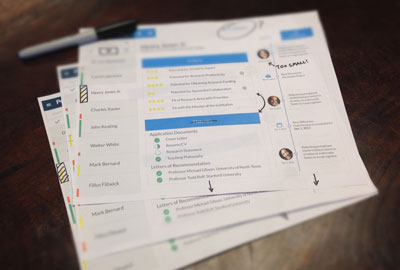Like most testing, usability testing is done both early and often. Fortunately you don’t need to spend a lot of money on a pretentious “usability lab” to address most of your usability problems. In fact you only need 3-4 people to find 75% of your usability problems(1).
One thing we’ve found to be very successful (and cheap!) is what we call the 5-Minute Usability Test… although in reality it takes more like 10 minutes. Early in the design process, after an internal iteration or two, we create a static mockup to get quick feedback on. This can just be printed out or shown on as an image on a mobile device. We then grab an unsuspecting coworker to spend a few minutes doing a gently-guided usability test. Rarely is this tester our ideal persona, but you don’t really need one to do first pass (or even second or third) usability testing for most apps. What is important is that the tester has no real knowledge of the app before. Having a blank-slate tester is usually the most revealing. When you do additional rounds of this testing, it’s good to get a couple of fresh testers to keep that fresh perspective.
Tips to get the most out of your 5-minute usability test:
- The design doesn’t have to be pixel-perfect, but it should be clean, organized, and not have any obviously distracting errors. Get rid of placeholder art and lorem ipsum text.
- Tell the tester just enough about the app so they can understand the context it and put themselves in the shoes of your design personas. The amount of background you have to explain depends on how niche your software is.
- Have your tester always ‘think out loud’.
- Ask your tester to first answer a couple of fundamental questions: What are you looking at? What is the name of this page or screen? Where are the navigation controls? How would you get back out of this screen?
- Have the user explain what they think each element on the mockup is for and if it’s ‘clickable’ or not.
- If the tester gets stuck on something, feel free how to explain how that particular element works so you can continue testing other parts.
- Take lots of notes!
- Don’t take any one tester’s feedback as gospel. Instead, use it as data to help your designers’ thought process, not compel them to make any specific change.
Doing even one round of this early in your project can save you a lot of time later and costs next to nothing, yet will generate some of the most useful feedback you’ll get on the project. In just a few minutes you’ll get some honest, actionable, and unbiased feedback, without a lot of the bikeshedding(2) that often happens with people who are intimate with the project.
Footnotes:
Oh, you are one to actually read footnotes? I like your style.
- Nielsen, Jakob (2000), Why You Only Need to Test with 5 Users
- Wikipedia, Parkinson’s law of triviality



